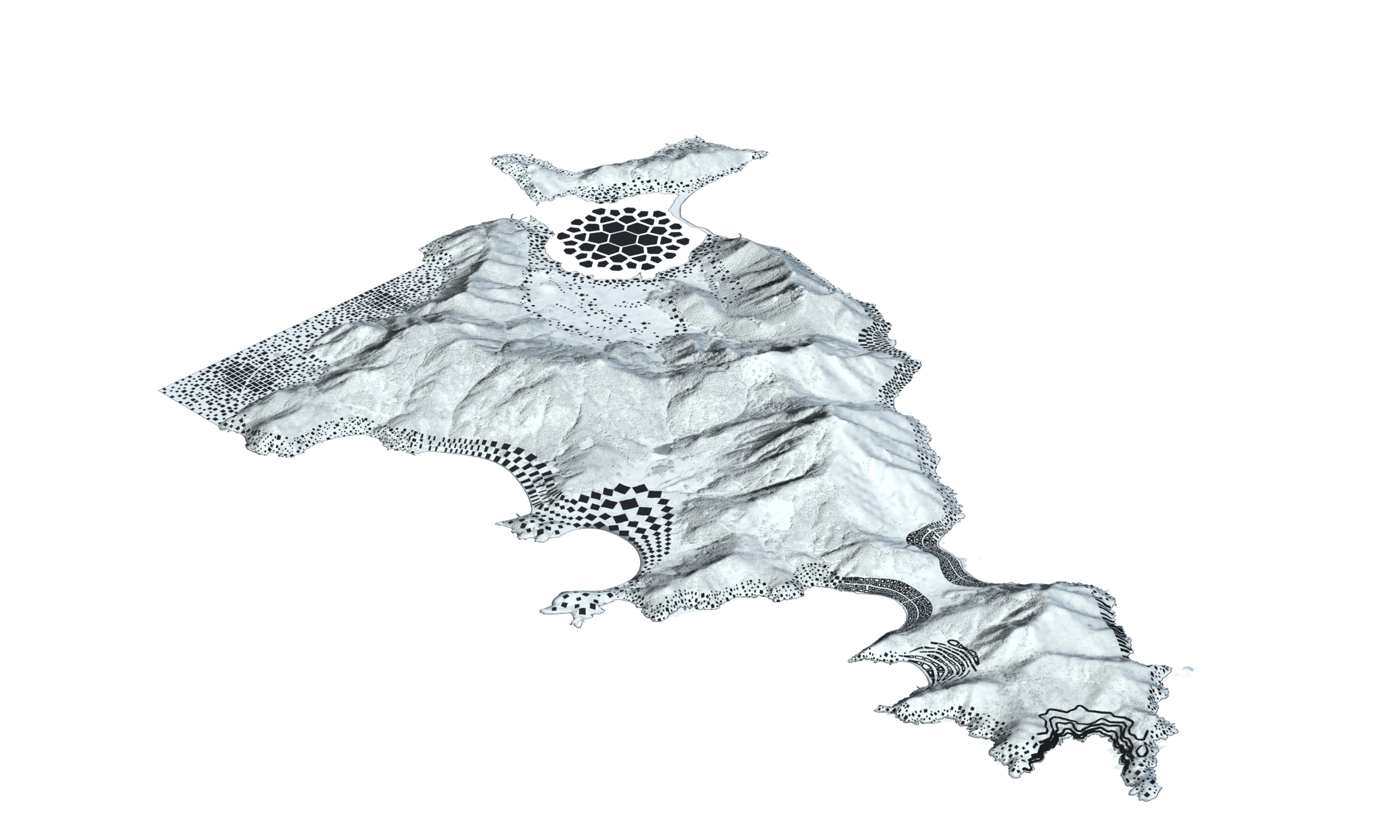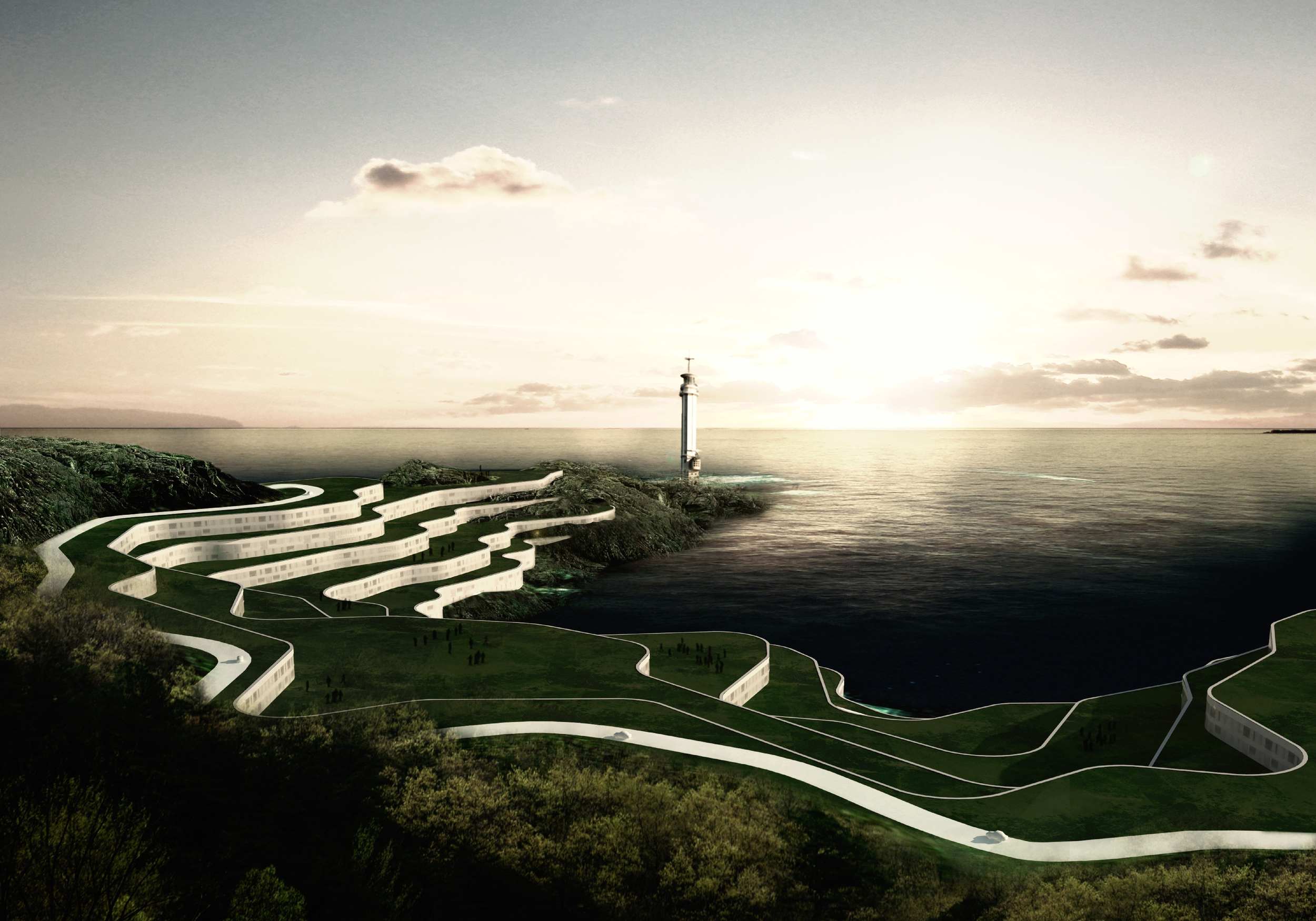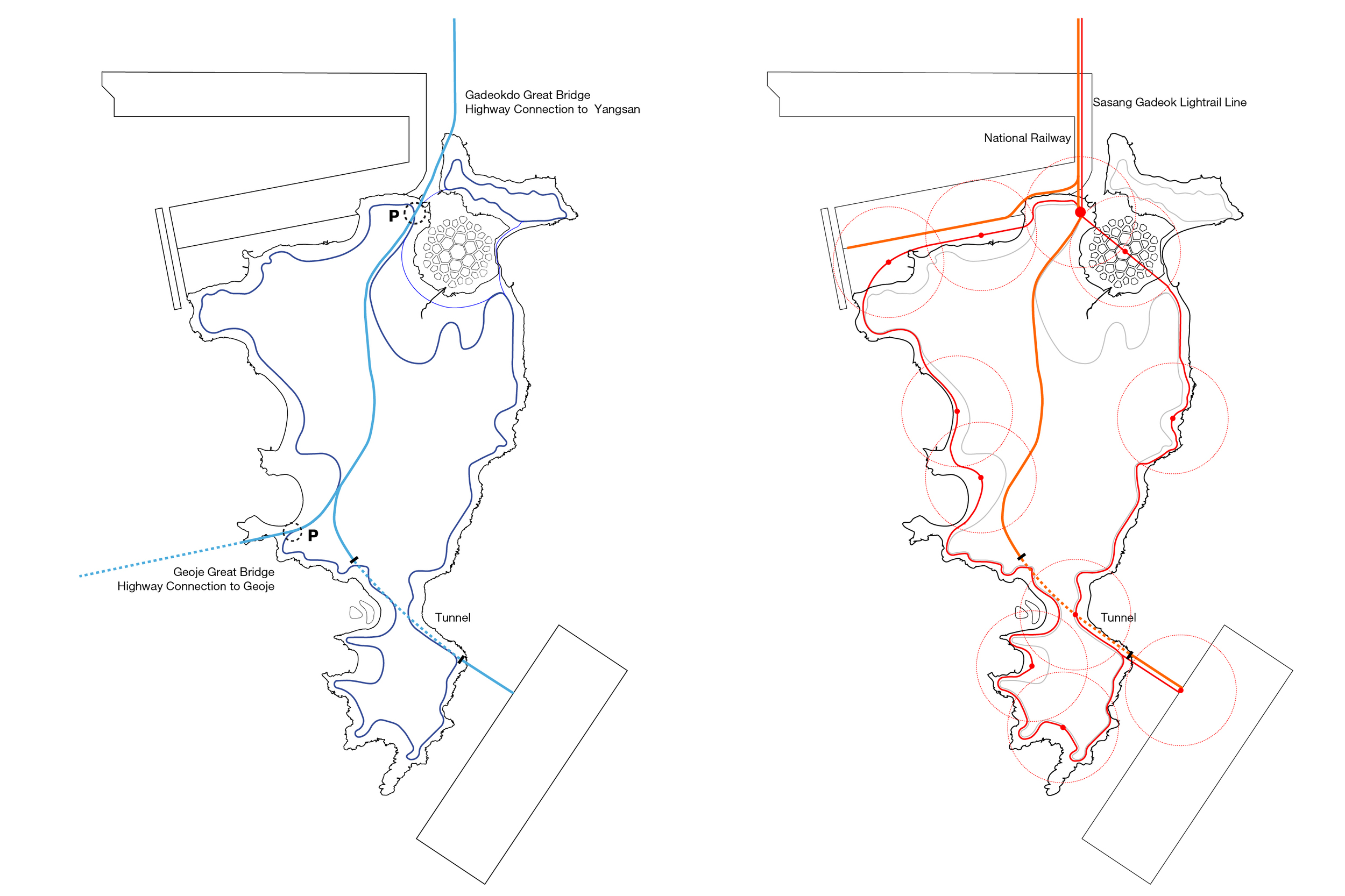Gadeokdo
PROJECT DESCRIPTION
The plan for the future development of Gadeokdo illustrates an ambitious strategy for urban mass tourism development, in a way that ensures both sustainability and spatial qualities. A simple gesture guarantees the preservation of the natural sanctuary of the mountainous landscape, while The coastal area is developed into a maritime leisure zone, interweaving urban development and recreational landscapes. An ambitious energy strategy combining wind, sun and waste energy in combination with an extensive and efficient public transportation system make a foundation for the development of a carbon neutral island.
PROJECT DATA
Project name
Gadeokdo
Typology
Residential, Commercial, Urbanism, Landscape
Location
Gadeokdo, South Korea
Year
2010
Status
Competition entry
Size
2200 Ha
Client
Municipality of Busan
Collaborators
Rambøll
Design team
Sinus Lynge, Tue Hesselberg Foged, Simon Sjökvist, Toni Rubio Soler, Nigel Jooren, Søren Martinussen, Tina Lund Højgaard
The main strategy is to divide the island into two
A sacred mountain sanctuary that keeps the mountains free of development and a coastal development that can inhabit the mountains up to 50 meters
The infrastructure is organized in one loop connecting the entire island: a light rail for public transport and a service road
The development is concentrated in spots around 8 light rail stations. This gives eight different destinations and identities around the island
Zero carbon island: One loop connects the entire island controlling with district power, waste and heating
The combination of wind energy at sea, a large scale solar panel park at the harbor roof scape and a centralized waste energy plant altogether constitutes a zero carbon energy cycle
The only thing that the large scale energy cycle can't provide is cooling of the buildings. Therefore local city cluster systems each has local sea water cooling in combination with energy efficient buildings.



















